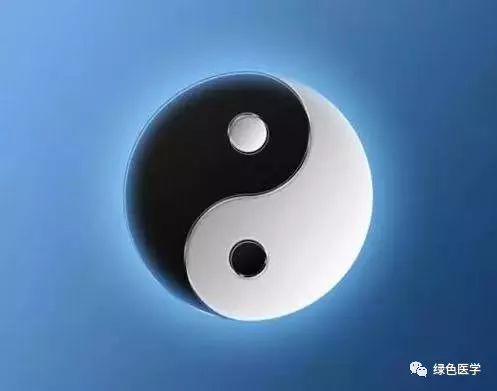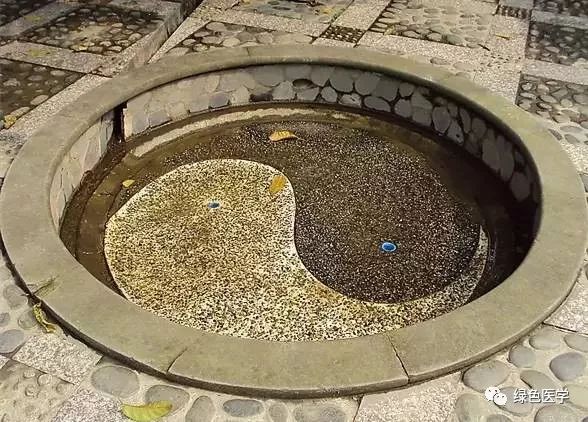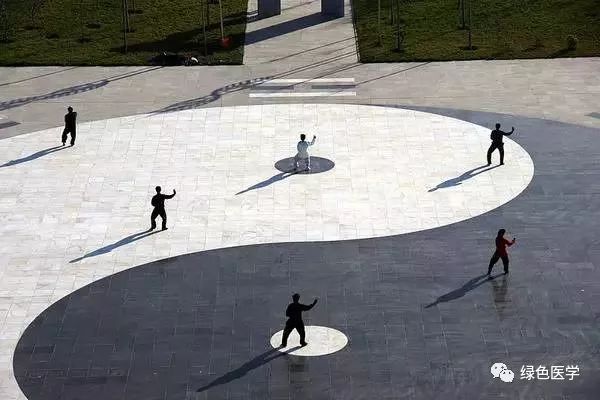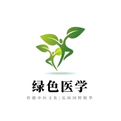We are now going to discuss a crucial topic: everything is related to Yin and Yang. Once you understand Yin and Yang, you can comprehend the laws of development of all things.
We all admire knowledgeable people; Yin and Yang are referred to as the Dao. This concept of Yin and Yang is the greatest wisdom in the universe. Therefore, if you grasp this, you are a great scholar, but the question is, can you truly convince others?
Because Yin and Yang encompass all aspects of everything, this is the essence of Chinese wisdom. You can use it to explain anything. Why do we have spring, summer, autumn, and winter? Because of the transformation of Yin and Yang energies in the universe. Why do people get sick? Because of the imbalance of Yin and Yang. Why does that elderly lady have so many ailments? Because she has too much Yin energy and insufficient Yang energy. Why are you so knowledgeable? Because you understand Yin and Yang!

▌What is Yin and Yang
Now, let’s look at what Yin and Yang are. The Huangdi Neijing (Yellow Emperor’s Inner Canon) is a vast ancient text. If you cannot understand it, no one will blame you. But if you cannot even understand the two characters Yin and Yang, you should blame yourself. The Yijing (I Ching) states that Yin and Yang give rise to the four images, the four images give rise to the eight trigrams, and the eight trigrams give rise to all things. Can you see? The mystery of all things lies within these two characters, Yin and Yang.
The simplest understanding is that Yin and Yang are two opposing aspects of the same thing.
Where there is up, there is down; where there is left, there is right; where there is south, there is north; where there is white, there is black. These are all Yin and Yang. Yin and Yang have very distinct characteristics—opposition. It is easy to see that anything that is upward, active, warm, and positive belongs to Yang. Conversely, anything that is downward, static, cold, and negative belongs to Yin.
Let’s first identify the greatest representatives of Yin and Yang—heaven and earth. This should not be difficult. You can tell me who is Yin and who is Yang. I guarantee you will guess correctly: heaven is above and represents Yang, while earth is below and represents Yin. Correct, you have taken a step towards becoming a great scholar.
In philosophy, we know that there is only relativity, not absoluteness. Heaven is Yang, but it is not absolutely Yang; it can be further divided. Daytime is Yang, and nighttime is Yin. Furthermore, although daytime is Yang, it can be divided into morning as Yang and afternoon as Yin. See, Yin and Yang have this characteristic of infinite division. If we continue to divide the world infinitely, we arrive at what we now call atomic science. An atom is the smallest known Yin and Yang. An atomic nucleus is static and represents Yin, while an electron orbiting the nucleus is dynamic and represents Yang. But can atoms be further divided?
The answer is certainly yes, because Yin and Yang can be infinitely divided, but with our current science, we can only recognize this. The wisdom of ancient people is greater than that of modern times. But that is a matter for scientists; let’s return to our discussion of Yin and Yang. Now that we know what Yin and Yang are, how to classify them, and that Yin and Yang can be infinitely divided, congratulations, you have taken another step forward.

▌Understanding the Laws of Yin and Yang
The way Chinese people speak is very interesting; the wisdom of ancient people permeates our language. This is called the common people using it daily without knowing. Think about it, what familiar idioms related to Yin and Yang do we have? Yin and Yang are often at odds, Yin and Yang are in conflict… Think of five, and if you can’t, you should blame yourself. Don’t go out claiming to be a great scholar because you won’t be able to convince anyone.
This concept of Yin and Yang can be said to be ingrained in the thoughts of Chinese people. Every aspect of Chinese life reflects the idea of Yin and Yang. You see, it is said that Chinese men are afraid of their wives. When I get my salary, I have to go home and hand it over to my wife. People say I am under the control of my wife. I say don’t laugh; this is a good thing. Men belong to Yang, and Yang represents dispersion. Therefore, when men have money, they cannot keep it; they either spend it on treating others or lend it out. Does the person laughing relate to this?
But women belong to Yin, which is about gathering. They are the ones who need to collect money. Even if a family has a fortune, it cannot withstand extravagance. Having money and being able to manage it is the way to wealth. If someone invites you to drink, and you check your pocket and find only a few dollars, you feel embarrassed to go, right? Everyone knows you are afraid of your wife and do not manage money, and slowly, they will not lend you money. You see, there are many invisible benefits.
From the above, we have learned a bit about the principles of Yin and Yang, which is a start, but it cannot be called an entry point. So how can we enter? You must understand the laws of Yin and Yang. Just like a newlywed couple wanting a happy life, they must first understand how life works. Once you understand the laws of life, you will step into the door of happiness. Therefore, I believe that marriage is not the beginning of life; the two people lack mutual understanding and still belong to separate Yin and Yang. Only through the test of time, mutual understanding, and care can they reach a state of Yin and Yang integration, which is the true beginning of life.

▌Understanding the Laws of Yin and Yang for Health Preservation
When we study health preservation, it is the same. You must understand Yin and Yang to comprehend the development laws of the body’s Qi, blood, meridians, and diseases, so you can know how to adjust and treat. I have a saying: if you do not understand Yin and Yang in treating diseases, the patient cannot leave the bed. If you do not understand Yin and Yang in health preservation, getting sick is truly unfair. If you treat someone without even understanding the basics of Yin deficiency and Yang deficiency, Yin excess and Yang deficiency, you absolutely cannot prescribe the right medicine. Treating someone without understanding will keep the patient bedridden. Sometimes, it is better not to treat at all; some may end up in a small box. Therefore, the ancient saying is a serious warning: a mediocre doctor kills countless people!
In health preservation, you must understand Yin and Yang. If you have Yin deficiency, it means there is less water. If you do not know this and think it is just deficiency, you may indiscriminately supplement Yang. Therefore, you take a lot of Yang tonics like Ren Shen (Ginseng), Lu Rong (Deer Antler), etc., which are quite expensive. As a result, someone says they have a nosebleed. I say, you can secretly enjoy it; this is mild. If you do not supplement, your blood pressure may rise, and your brain may become confused. Originally, you wanted to preserve health and achieve wellness, but instead, you end up with illness. Isn’t that unfair?
Therefore, we must first understand the laws of Yin and Yang. The Huangdi Neijing mentions four laws of Yin and Yang, which are the four types of movement and change of Yin and Yang. This is the essence. Note that once you understand this, you can truly say you are a great scholar.
Today, our discussion of Yin and Yang is difficult to exceed the scope of what the ancients have discussed because they studied this deeply. I enjoy reading many ancient texts; it is a literary feast. So, do not expect me to have any innovations; I am merely picking up a few scraps from the ancients and cooking a small pot of millet porridge for you. After a big feast, use this to relieve your fullness.
▌Detailed Application of Yin and Yang in Health Preservation
Taking people as an example: men are Yang, and women are Yin; in a person, the front is Yin, the back is Yang, the top is Yang, the bottom is Yin, the exterior is Yang, and the interior is Yin. The five organs are internal and represent Yin, while the six bowels are external and represent Yang… Understanding this principle, now let’s raise our arms. The inner side of this arm is Yin, and the outer side is Yang. The meridians running along the inner side are called Yin meridians, while those on the outer side are called Yang meridians.
Yang meridians exhibit characteristics of activity, warmth, and rapid movement, while Yin meridians tend to be static, cold, and slow-moving. Therefore, the outer side of the arm is mostly muscle, while excess fat accumulates on the inner side.
When we usually tap the meridians, we must also consider the characteristics of Yin and Yang. The meridians on the outer side of the limbs belong to Yang meridians, so we can use invigorating techniques like tapping, hitting, and patting to stimulate them. The inner side, which is mostly Yin meridians, requires gentle methods like kneading, pressing, and stroking to stimulate.
Many people do not understand this principle and think that meridians can just be tapped without distinguishing between Yin and Yang. They vigorously tap the inner Yin meridians, resulting in adverse effects, worsening their constitution and sleep. Tapping the Yin meridians is like forcing a weak woman to do heavy labor; who can withstand that?
A friend of mine, Xiao Yu, often has swollen legs and feet, and she heard it was due to kidney deficiency. She tried to stimulate the kidney meridian for a month, but the swelling did not go down; instead, she became more fatigued. I said, this kidney meridian belongs to Yin and is responsible for storage. You are knocking on the door while she is resting inside; of course, she will not work well. What should we do? Change the knocking to kneading. Once the kidney meridian felt comfortable, it naturally worked well, and after just two weeks of kneading, the swelling decreased significantly, and her energy improved. You see, understanding Yin and Yang prevents mistakes.
Time also has Yin and Yang. In a year, spring and summer nourish Yang, while autumn and winter nourish Yin. In a day, daytime is Yang, and nighttime is Yin. Health preservation must follow this principle. A friend of mine used to vigorously tap the meridians regardless of morning or evening, resulting in constipation, insomnia, irritability, and a bitter mouth. After understanding Yin and Yang, he changed his methods, adapted to the changes in time, and gradually improved his health.
Finally, let’s talk about Yin deficiency and Yang deficiency. There is a saying: nine out of ten people are deficient. Generally, people know that “deficiency should be supplemented,” but supplementing Yin and supplementing Yang are not the same. If the supplements are not appropriate, they can be toxic. If a person has Yin deficiency and indiscriminately grabs a handful of tonics, regardless of whether they are for Yin or Yang, just supplementing is not good. I would really worry for you. If you are Yin deficient, the internal heat is already strong, and if you take tonics that support Yang and boost heat, the consequences are obvious; it’s like adding fuel to the fire, burning out your vital energy.
Another friend of mine has a very cold constitution and suffers from severe dysmenorrhea. She has seen many TCM practitioners, but nothing worked. Later, I asked, and it turned out she drank cold beverages every day and ate cold foods like watermelon and pears. She was trying to expel cold while simultaneously creating more cold. How could she get better? After changing her diet, the medication worked quickly.
Therefore, in health preservation, you must understand Yin and Yang. Supplement Yin when it is Yin deficient, and supplement Yang when it is Yang deficient. This is the fundamental method of health preservation. Mastering this set of rules is like having the key to the door of health preservation.
For Traditional Chinese Medicine, Yin and Yang are the fundamental laws of all things. The diseases of the human body also cannot escape this principle. Therefore, to cure diseases, we must first seek solutions from the root of the problem—Yin and Yang. In terms of health preservation, we must understand the four basic laws of Yin and Yang: mutual rooting and mutual use, opposition and restriction, growth and balance, and mutual transformation.
Well, let’s not discuss this from too far or too grand a perspective. Today, let’s take examples from our daily lives to explain Yin and Yang. Let’s view Yin and Yang as a pair of newlywed couples, where the man is Yang and the woman is Yin.
▌YinYang The first law: mutual rooting and mutual use
A pair of newlywed couples live a happy life. When is the couple at their sweetest? Right now, they have just come together, and it is fresh; they have not yet encountered the trivialities of life. It is the time of love and sweetness. When the man leaves for a while, the woman misses him, wishing they could be together all the time. This is called mutual rooting. Neither Yin nor Yang can exist separately; solitary Yang cannot thrive, and solitary Yin cannot grow. Both are necessary. The ancients said, Yang roots in Yin, and Yin roots in Yang. Without Yang, Yin cannot be born; without Yin, Yang cannot transform.
This in health preservation means having a holistic view. You must have this concept of Yin and Yang. This is the holistic view of Traditional Chinese Medicine. If your approach is correct, you will not go wrong, and the disease will not worsen. A Yang disease is not simply a Yang issue; it also has a relationship with Yin. An ancient great physician named Zhang Jingyue once said: “Those who are good at supplementing Yang must seek Yang within Yin, so Yang receives assistance from Yin and can transform endlessly. Those who are good at supplementing Yin must seek Yin within Yang, so Yin receives life from Yang and the source is inexhaustible.” What does this mean? A true understanding of the medical way considers the whole when treating diseases and preserving health. A Yang disease is not just a Yang problem, and a man being afraid of his wife is not just a man’s problem, right?
Well, we have only discussed half of this law. We talked about mutual rooting, and next is mutual use. Mutual use refers to both parties supporting, promoting, and assisting each other. A young man, before marriage, often has no direction in life, unlike women who are more meticulous. His home is often messy, and he washes clothes only once a week. Don’t laugh; this is not uncommon. I have a friend whose chaos is so evident that you can smell him from two meters away because of his strong “manly scent.” Haha, don’t believe it? There are many such men. After marriage, however, it is different. His clothes are clean and fragrant, and not a wrinkle is in sight. Why? Because he is married! He has a wife now, and women are good at this. Therefore, men are responsible for external affairs, earning a living, and supporting the family, while women manage the household, cook, do laundry, and take care of the family. The two complement and assist each other, leading to a harmonious family. This is mutual use.
This in the body means that the Yin essence in the body continuously rises, providing Qi, blood, and fluids to support Yang energy. This Yang energy can then perform its functions, protecting the body from external pathogens and ensuring that Yin essence remains stable and does not leak. When Yin energy is balanced and Yang energy is solid, the body can be healthy. This is what the Huangdi Neijing refers to as “Yin is stable, Yang is secret.”
▌Second Law of Yin and Yang: Opposition and Restriction
We previously mentioned that men are afraid of their wives. Outsiders may say such men are weak, but this does not consider the whole picture. Why are men afraid of their wives? Sometimes it is because the woman is too strong. In novels, such women are often depicted as tall and strong, with tempers that can overpower men. If you encounter such a wife, would you be afraid? This illustrates the opposition and restriction between Yin and Yang. When men are strong, women are afraid, and when women are too strong, men are also afraid. “Yin excess leads to Yang deficiency.”
Men belong to Yang, and they must be strong to succeed in their careers. Women belong to Yin, and they must be gentle and considerate to receive the love and protection of men. However, nowadays, gentle women have become strong. “When two tigers fight, one will be injured.” While harming their bodies, the happy and harmonious life also has cracks… If women understand Yin and Yang, they can change the situation, using a “soft approach” to overcome the strong, achieving the greatest results with the least effort. Why did we not hear of so many divorces in the past? This wisdom runs deep.
In health preservation, this point is very important. When Yang energy is excessive, we often say there is too much heat. Yang represents heat, and when the body is overly hot, it is like boiling water; if you do not take the pot off the heat, the water will continue to evaporate. Yin represents the body’s fluids. When Yang heat is too strong, the body will show symptoms of dryness, fever, dry throat, and dry eyes. This is a manifestation of Yin deficiency, where the body’s fluids are insufficient to nourish the organs and internal organs.
Conversely, if Yin energy is too strong, then Yang is insufficient. The characteristics of Yin are cold. When the body has too much Yin, it leads to reduced bodily functions, insufficient heat production, cold hands and feet, and a fear of cold.
So how do we treat Yin deficiency and Yang deficiency? The Huangdi Neijing proposes a golden rule: “Treat the cold with heat, and treat the heat with cold.” A Tang dynasty physician named Wang Bing perfected this into a method, one of which is very good: “Strengthen the master of water to treat Yang light, and benefit the source of fire to dispel Yin shadows. Use cold medicines to treat heat symptoms, and use warm medicines to adjust cold symptoms.”
▌Identifying Your Yin and Yang Constitution
1. Cold-type constitution with insufficient Yang energy
This is characterized by an introverted personality, a preference for quietness, a fear of cold, a liking for warmth, a love for hot water, a tendency to have diarrhea, cold hands and feet, lack of energy, and easy fatigue. The tongue coating is often white, with more fluids, a pale or sallow complexion, and a tendency to be overweight. The pulse is usually slow. Therefore, one should increase Yang stimulating practices in yoga.
2. Hot-type constitution with Yin deficiency and excess fire
This is characterized by an extroverted personality, a love for movement, a preference for cold, a dislike for warmth, a love for cold drinks, a tendency to feel bitter, yellowish urine, irritability, constipation, and dryness of the mouth and throat. The tongue is red with a yellow coating, the complexion is flushed, and the pulse is often rapid.
Those with excessive Yang and Yin deficiency represent insufficient body fluids. When fluids are low, fire is strong, leading to various symptoms like mouth ulcers, unexplained irritability, restlessness, and heat in the palms and chest. Therefore, one should increase Yin practices in yoga to balance Yin and Yang.
 — THE END —
— THE END —
⊙This article is reproduced from the internet and is for reference only. The copyright belongs to the original author. If there are any objections, please inform us for timely deletion.
⊙This article mentions various prescriptions or therapies. Please consult a physician and do not use them blindly. This platform does not bear any responsibility for any consequences!
Recommended Articles

